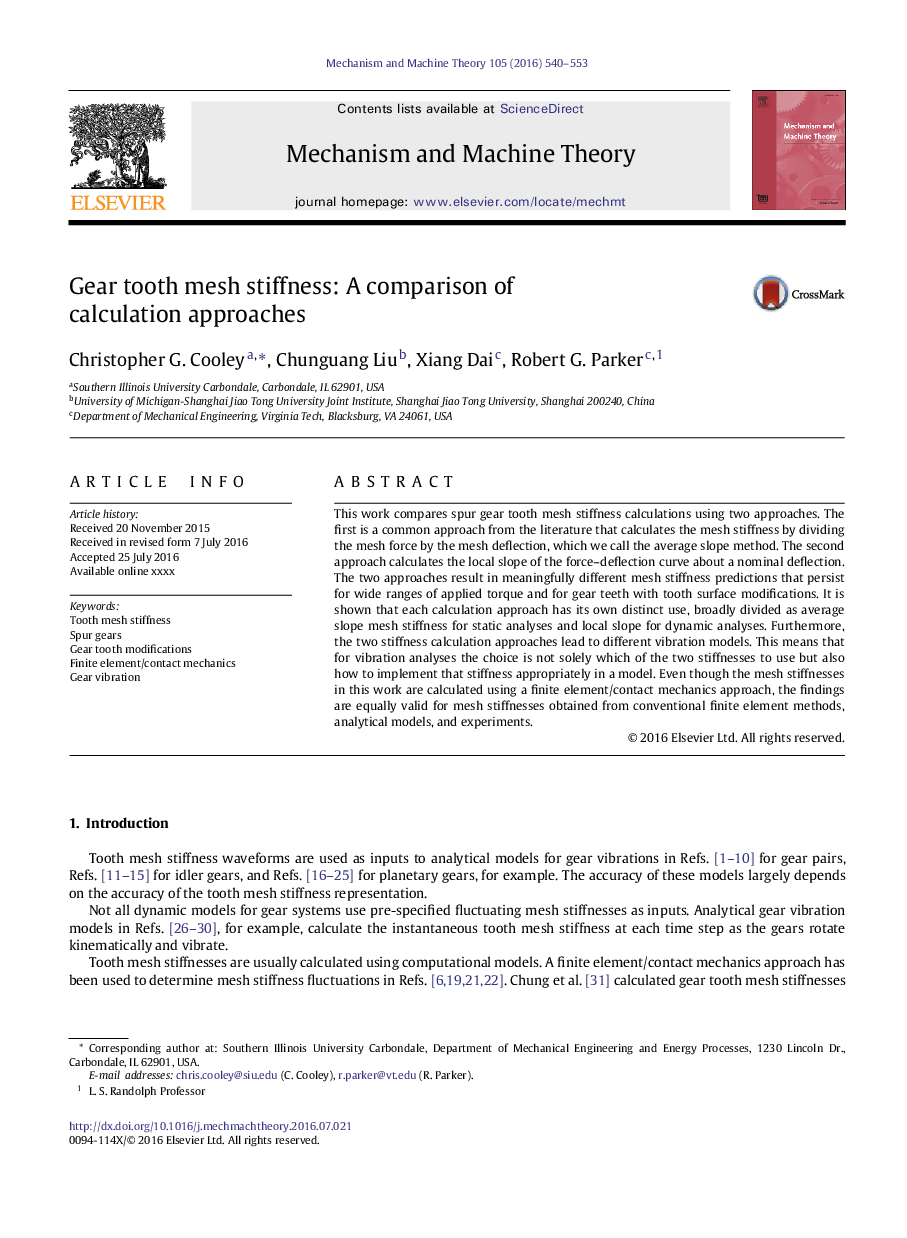| Article ID | Journal | Published Year | Pages | File Type |
|---|---|---|---|---|
| 7179665 | Mechanism and Machine Theory | 2016 | 14 Pages |
Abstract
This work compares spur gear tooth mesh stiffness calculations using two approaches. The first is a common approach from the literature that calculates the mesh stiffness by dividing the mesh force by the mesh deflection, which we call the average slope method. The second approach calculates the local slope of the force-deflection curve about a nominal deflection. The two approaches result in meaningfully different mesh stiffness predictions that persist for wide ranges of applied torque and for gear teeth with tooth surface modifications. It is shown that each calculation approach has its own distinct use, broadly divided as average slope mesh stiffness for static analyses and local slope for dynamic analyses. Furthermore, the two stiffness calculation approaches lead to different vibration models. This means that for vibration analyses the choice is not solely which of the two stiffnesses to use but also how to implement that stiffness appropriately in a model. Even though the mesh stiffnesses in this work are calculated using a finite element/contact mechanics approach, the findings are equally valid for mesh stiffnesses obtained from conventional finite element methods, analytical models, and experiments.
Keywords
Related Topics
Physical Sciences and Engineering
Engineering
Industrial and Manufacturing Engineering
Authors
Christopher G. Cooley, Chunguang Liu, Xiang Dai, Robert G. Parker,
